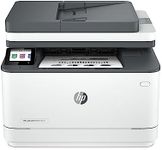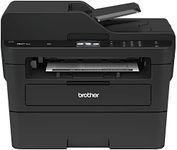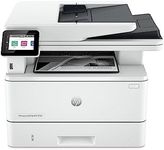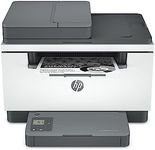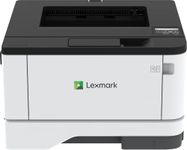Buying Guide for the Best Monochrome Laser Printers
Choosing a monochrome laser printer can be a smart move if you mostly print black-and-white documents and want something fast, reliable, and cost-effective. These printers are great for home offices, students, or small businesses that need crisp text and efficient printing. To find the best fit, it's important to understand the main features and how they relate to your needs. By focusing on the key specifications, you can make sure the printer you pick will handle your typical printing tasks smoothly and without unnecessary extras.Print Speed (Pages Per Minute, PPM)Print speed tells you how many pages the printer can produce in one minute. This is important if you often print large documents or need quick results. Lower speeds (around 20-25 PPM) are fine for occasional or light use, while higher speeds (30 PPM and above) are better for busy environments or frequent printing. Think about how much you print at once—if you only print a few pages now and then, speed may not matter much, but for regular, high-volume printing, a faster printer saves time.
Print Resolution (DPI)Print resolution, measured in dots per inch (DPI), affects how sharp and clear your printed text and images will look. Standard resolutions (600 x 600 DPI) are usually enough for text documents, while higher resolutions (1200 x 1200 DPI or more) are better if you want extra clarity for small fonts or simple graphics. If you mostly print basic documents, standard resolution is fine, but if you need professional-looking results, consider a higher DPI.
Monthly Duty CycleThe monthly duty cycle is the maximum number of pages a printer is designed to handle in a month. This helps you understand how durable the printer is for regular use. Light-duty printers may have a cycle of a few thousand pages, while heavy-duty models can handle tens of thousands. Estimate how much you print each month and choose a printer with a duty cycle comfortably above that number to ensure long-term reliability.
Paper Handling (Input/Output Capacity)Paper handling refers to how much paper the printer can hold at once, both for input (how many sheets you can load) and output (how many sheets it can stack after printing). Smaller trays (around 150 sheets) are fine for light use, but larger trays (250 sheets or more) are better if you print often and want to refill less frequently. Consider your typical print jobs—if you print in batches or share the printer with others, a larger capacity is more convenient.
Connectivity OptionsConnectivity options determine how you can connect to the printer. Basic models may only offer USB, which is fine for single-computer use. More advanced printers include Wi-Fi, Ethernet, or mobile printing features, making it easier to print from multiple devices or wirelessly. If you want to print from laptops, smartphones, or share the printer in a network, look for models with wireless or network connectivity.
Duplex Printing (Automatic Double-Sided Printing)Duplex printing means the printer can automatically print on both sides of the paper. This saves paper and is convenient for creating booklets or professional documents. Some printers require you to manually flip the paper, while others do it automatically. If you often print multi-page documents or want to reduce paper use, automatic duplexing is a helpful feature.
Toner Cartridge YieldToner cartridge yield tells you how many pages you can print before needing to replace the toner. Standard-yield cartridges are cheaper but need replacing more often, while high-yield cartridges last longer and can be more cost-effective over time. If you print a lot, a printer that supports high-yield cartridges can save you time and hassle.
Size and FootprintThe size and footprint of the printer matter if you have limited space. Compact models fit easily on a desk or shelf, while larger ones may need their own spot. Think about where you’ll place the printer and measure the space to ensure a good fit, especially if your workspace is tight.








